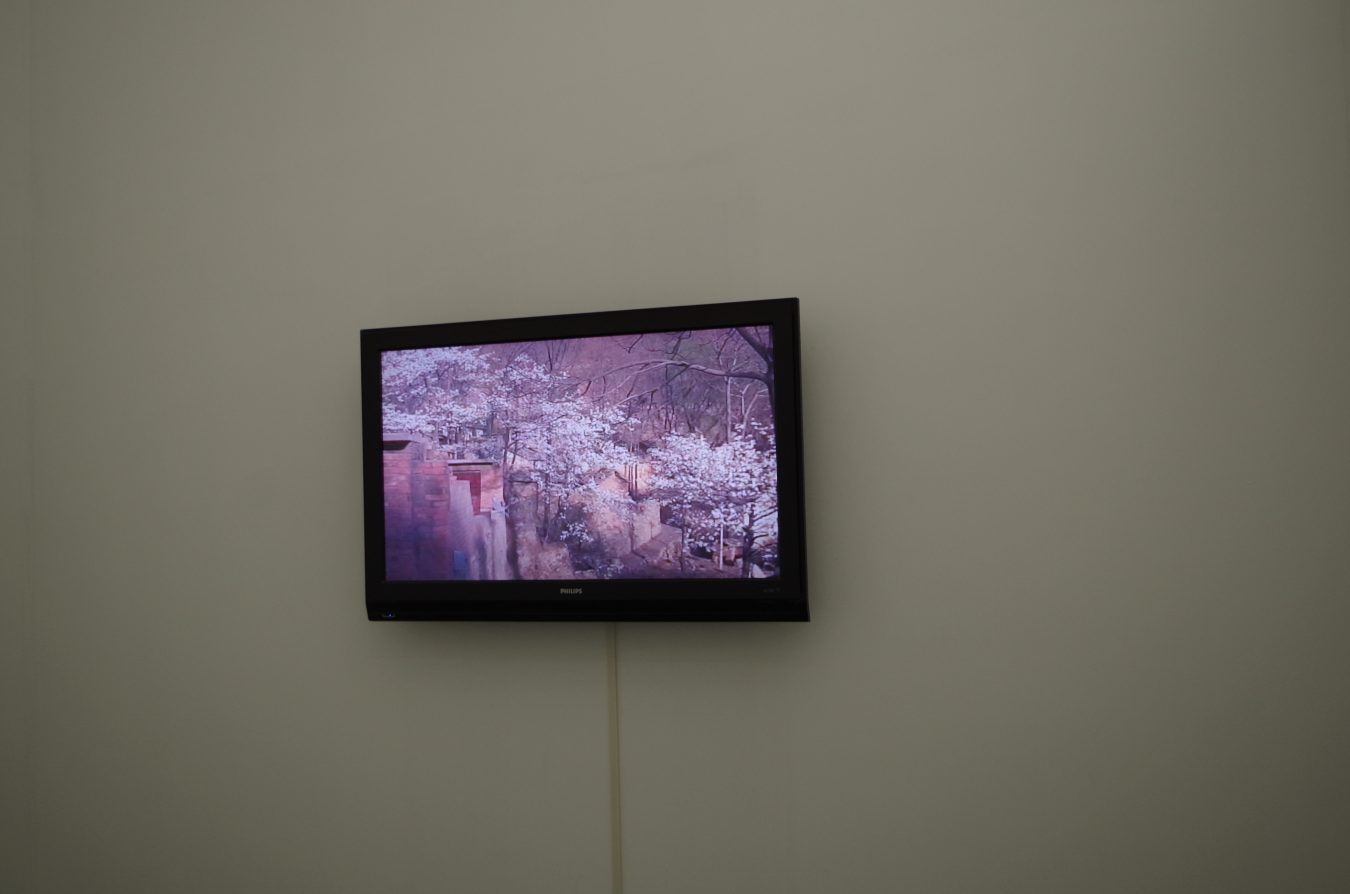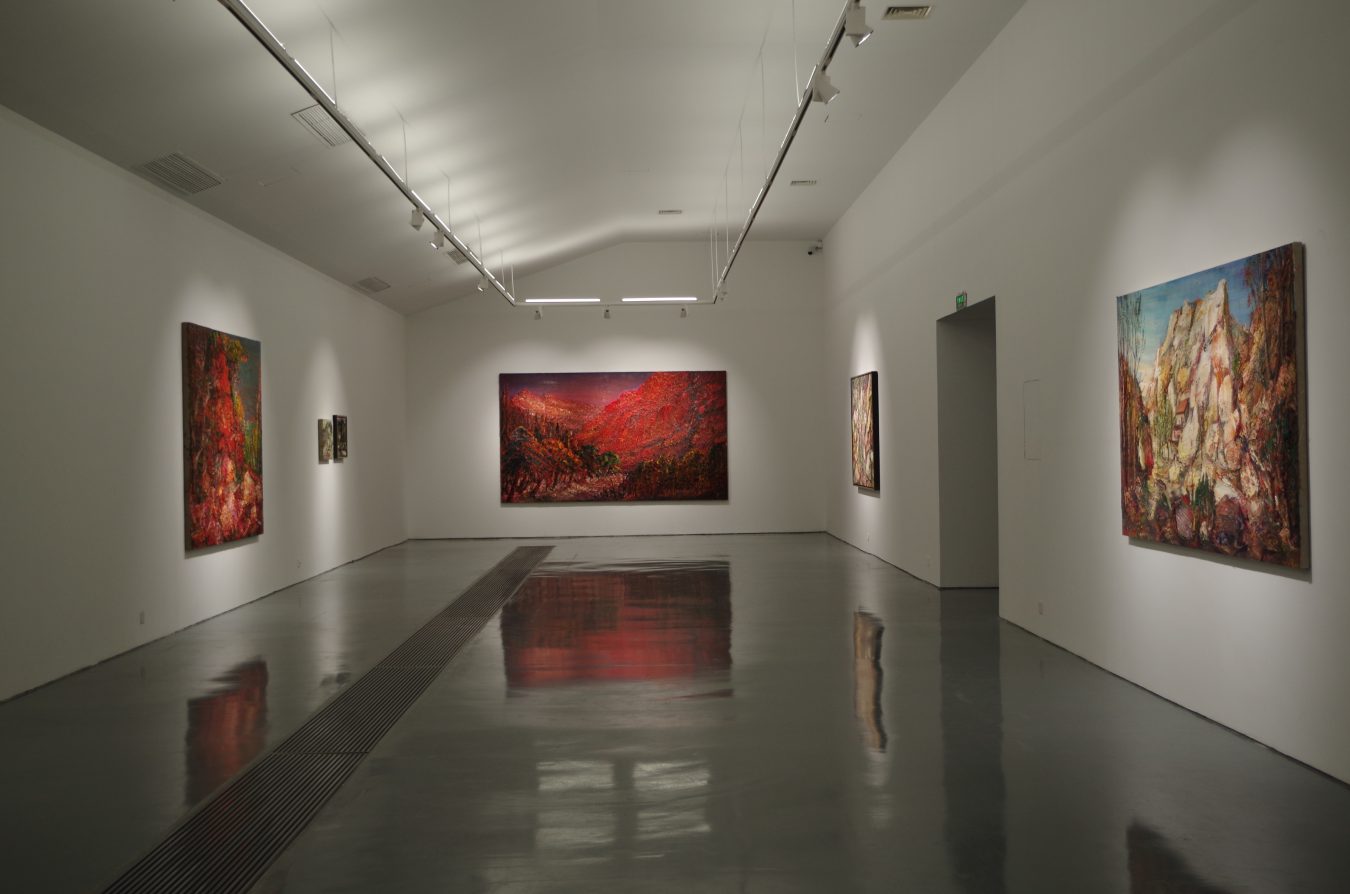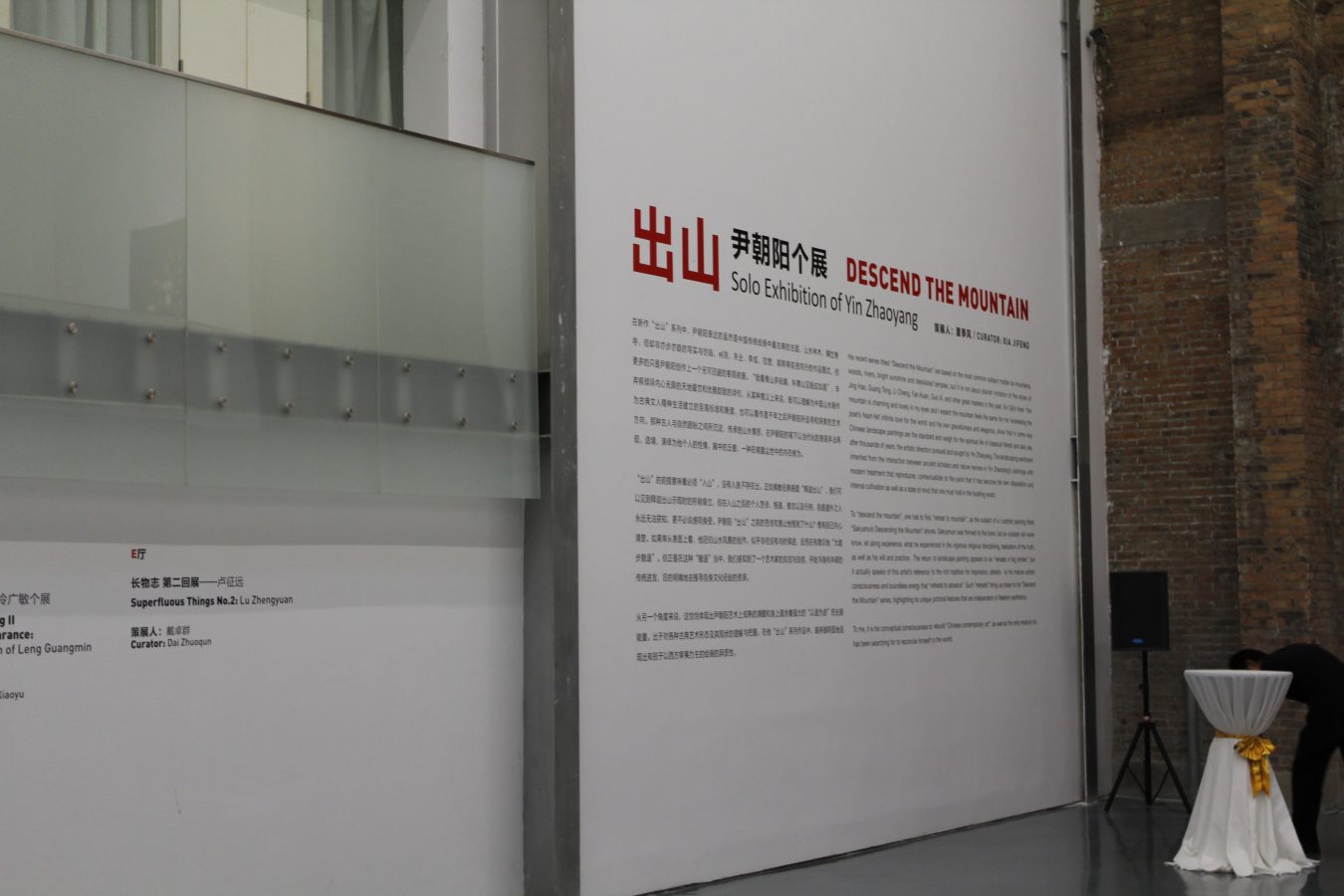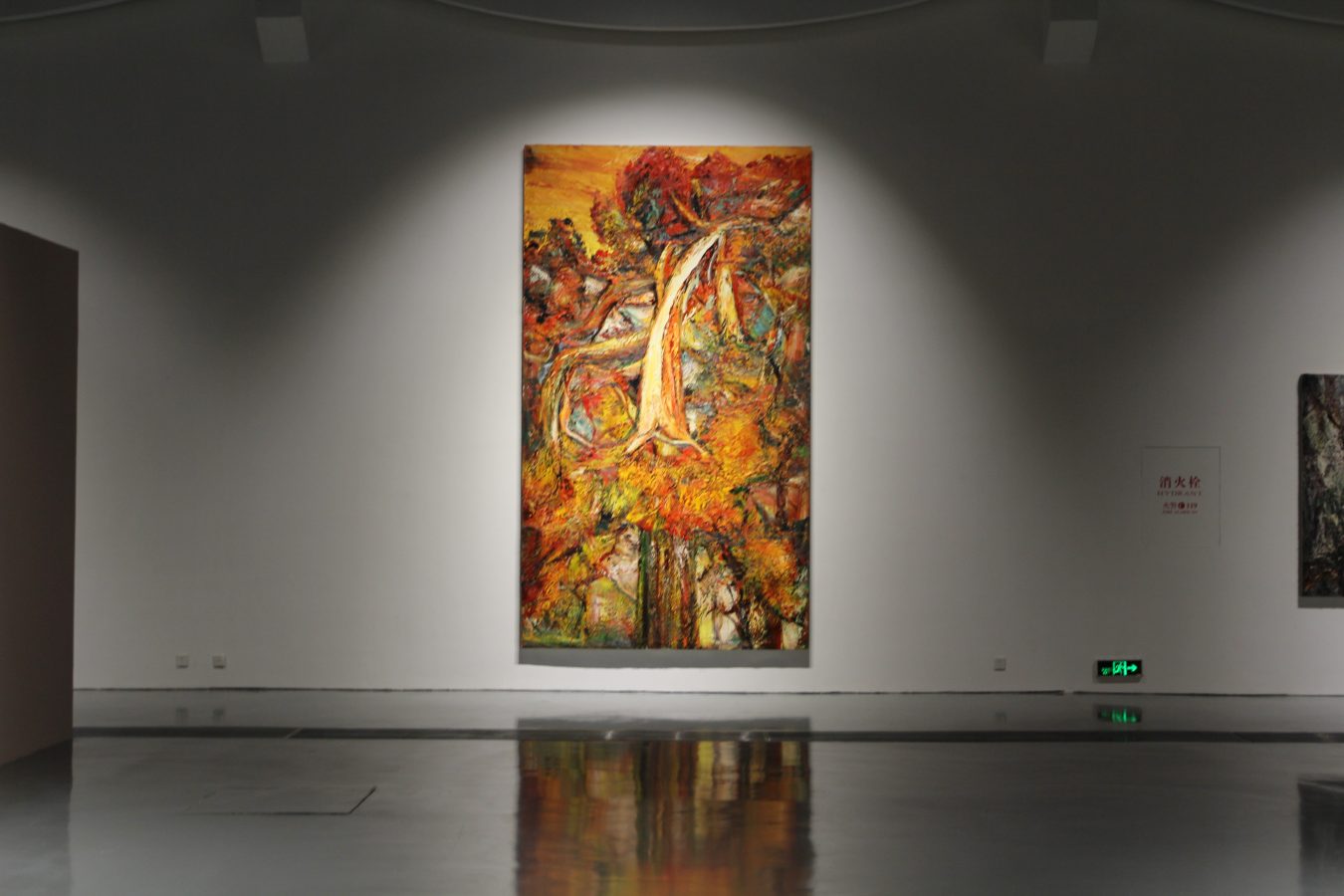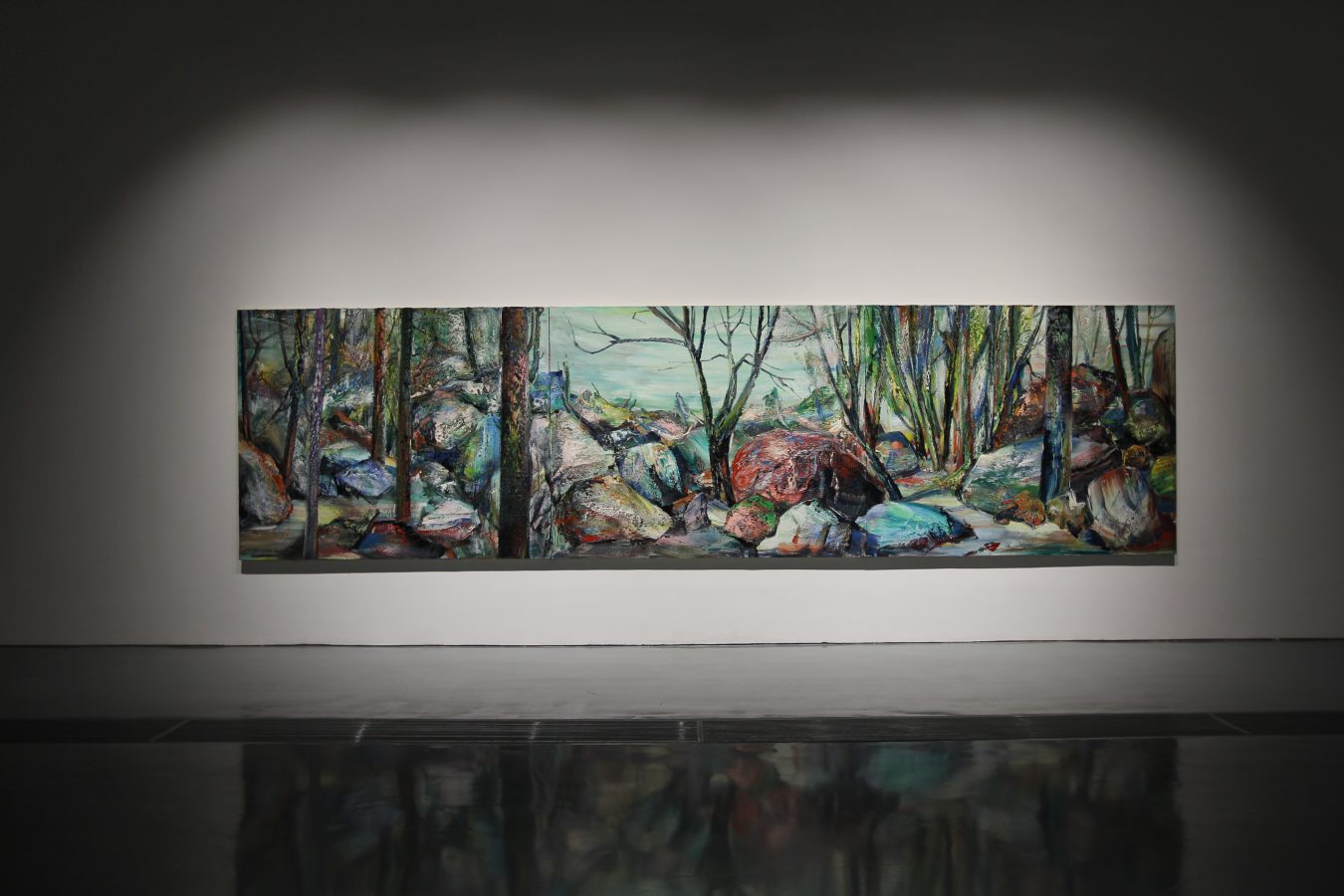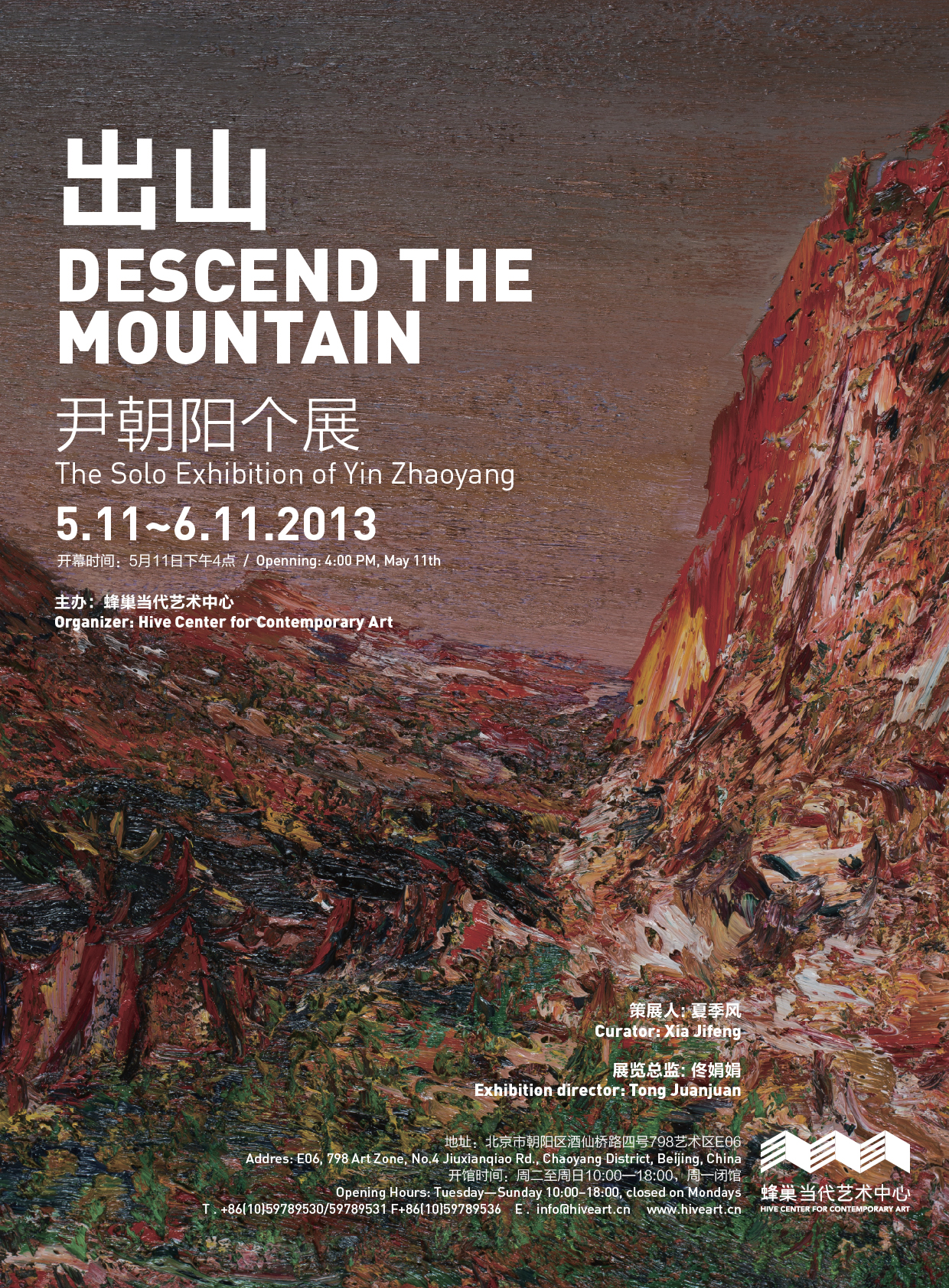As one of the most representative Chinese artists born in the 1970s, Yin Zhaoyang, well-known for his sharp critical realism and tragic heroism, is usually connected with such key words as confusion, sentimentality, struggle, exhaustion, sublimity, pain, lament and anger, ideal, eternity, etc. His previous works, revealing to the full the artist’s depth of feeling, are always enveloped in a strong mood of intense confrontation with social reality. There is no doubt that he belongs to the “the calf goes against the oak tree” type of artist: he sets for himself a goal that is difficult for ordinary people to achieve and faces the challenge squarely, never dwelling on the abstract and avoiding the real issues by bypassing difficulties. However, in recent years, Yin seems to act in opposition to the internationalization campaign of contemporary Chinese art and its theoretical propaganda by presenting a series of landscape paintings, which, in terms of style, contrast so drastically with his former creations that they seem uncomfortably inopportune. His works replace the once socially challenging and persistent artist with one who begins to “retreat in big strides” ( in Mo Yan’s words) and indulges himself in the tranquilizing landscape- in some way surprising and unexpectedly pleasant.
His recent series titled “Descend the Mountain” are based on the most common subject matter as mountains, woods, rivers, bright sunshine and desolated temples, but it is not about slavish imitation of the styles of Jing Hao, Guang Tong, Li Cheng, Fan Kuan, Guo Xi, and other great masters in the past. They are actually like the landscape in Songshan, He’nan province, his hometown, which is, though still towering, just an unavoidable reference. Xin Qiji’s lines: “the mountain is charming and lovely in my eyes and I expect the mountain feels the same for me.”expressing the poet’s heart-felt infinite love for the world and his own gracefulness and elegance, show that in some way Chinese landscaping paintings are the standard and weigh for the spiritual life of classical literati and also are, after thousands of years, the artistic direction pursued and sought by Yin Zhaoyang. The landscaping sentiment inherited from the interaction between ancient scholars and nature revives in Yin Zhaoyang’s paintings with modern treatment that reproduces, contextualizes to the point that it has become his own disposition and internal cultivation as well as a state of mind that one must hold in the bustling world. Guo Xi said in The Elegance of The Bamboo and Spring: Landscape his experience and standpoint in drawing landscaping paintings that people living in the world do not have to become a hermit in nature to preserve his moral integrity because a good landscaping painting is enough to make people “appreciate nature without being physically attached to it”. This, perhaps, is also one of the driving force and cause of Yin Zhaoyang’s creation of landscaping paintings. To “descend the mountain”, one has to first “retreat to mountain”, as the subject of a Buddhist painting titled “Sakyamuni Coming out from the Mountain” shows. Sakyamuni was thinned to the bone, but an outsider will never know, let along experience, what he experienced in the vigorous religious disciplining, realization of the truth, as well as his will and practice. What on earth does Yin Zhaoyang learn from his asceticism before “coming out of the mountain”? The answer is to confide and be true to his heart.
The return to landscape painting appears to be “retreats in big strides” instead of advancing with the times, but such “retreats” actually speak of this artist’s awareness and reference to the rich tradition for inspiration, and in my opinion, attesting to his mature artistic consciousness and boundless energy that “retreats to advance”. Consequently, we see in his paintings an increasingly obvious unique pictorial feature that is independent of Western aesthetics. In the wake of it, there are of course surprises and infinite anticipations.

